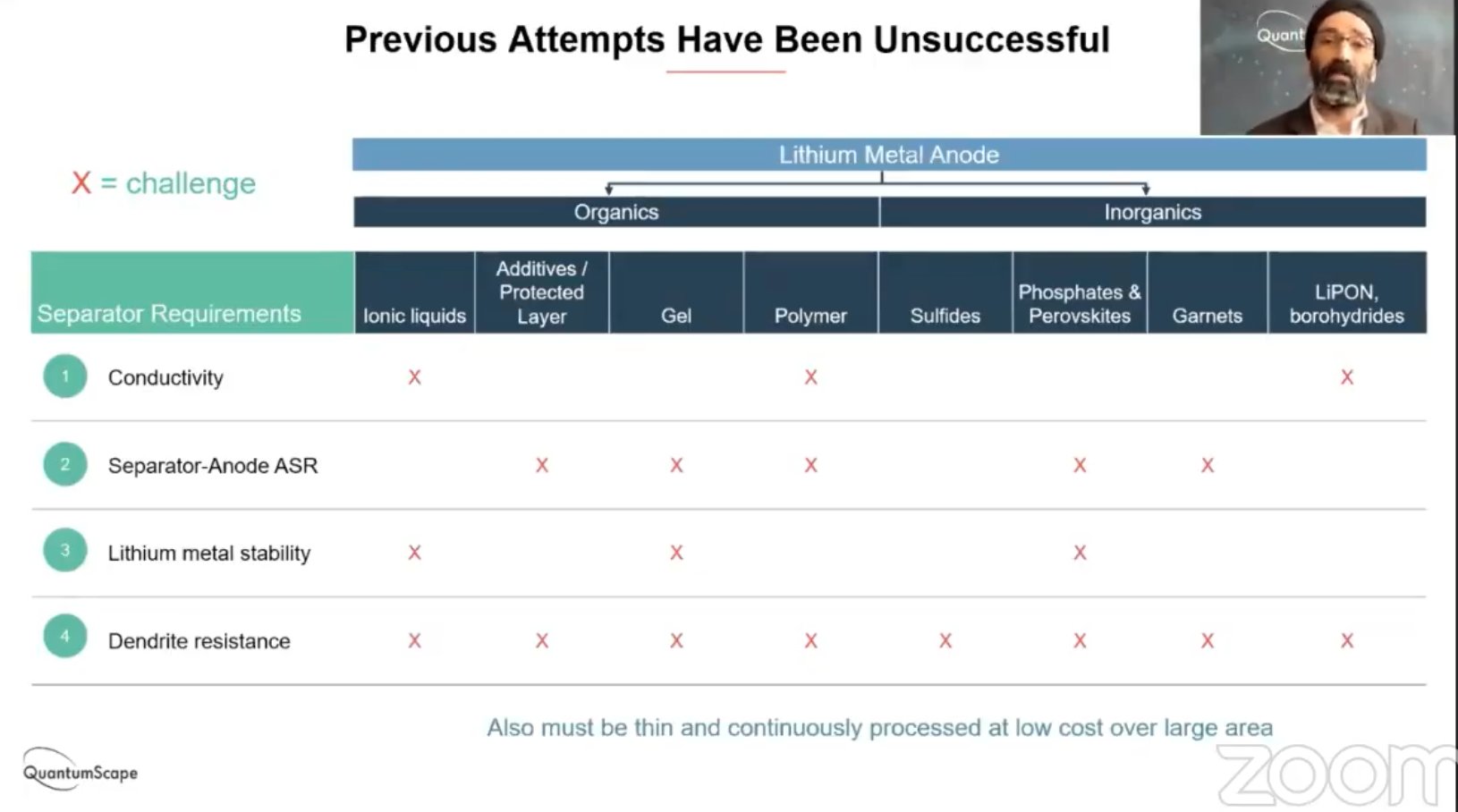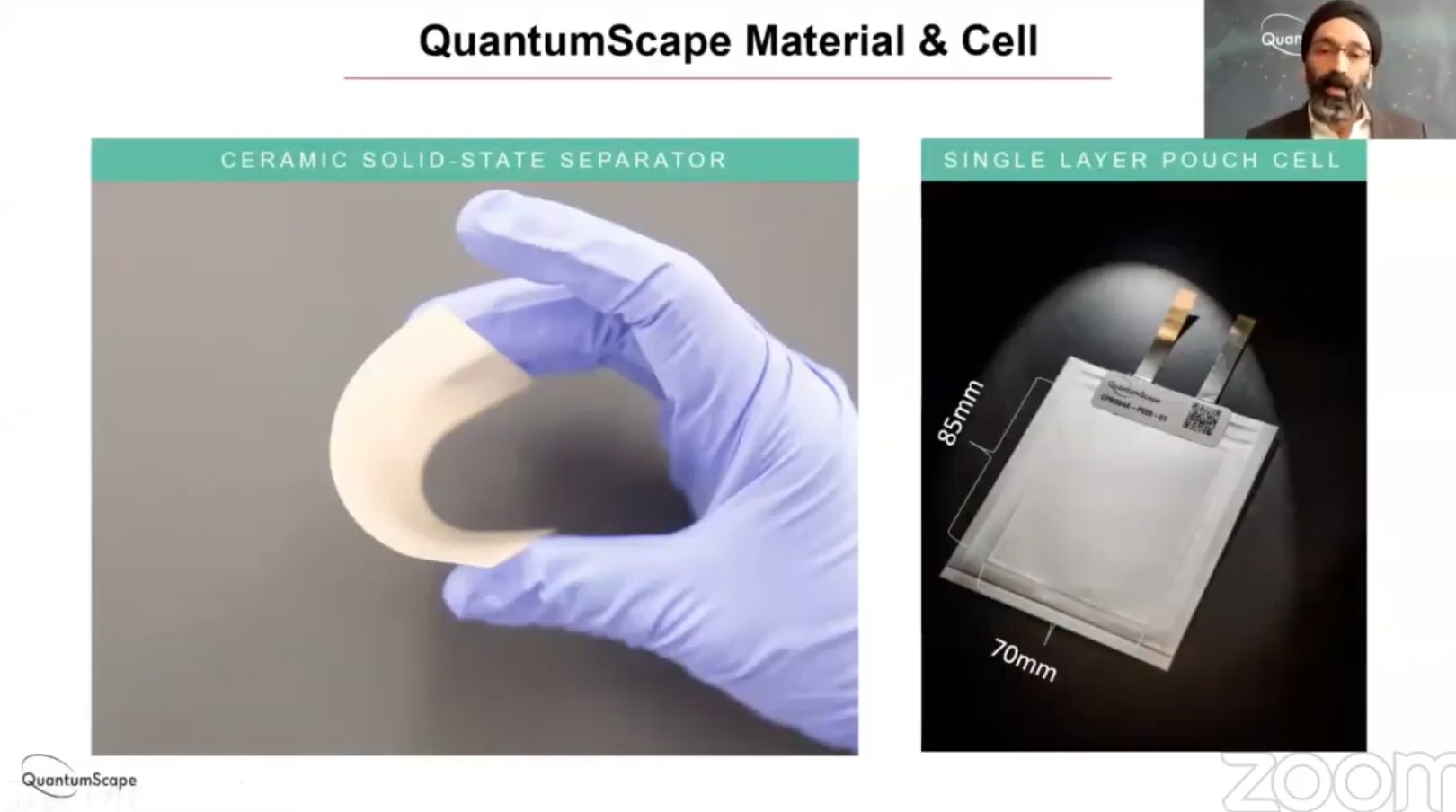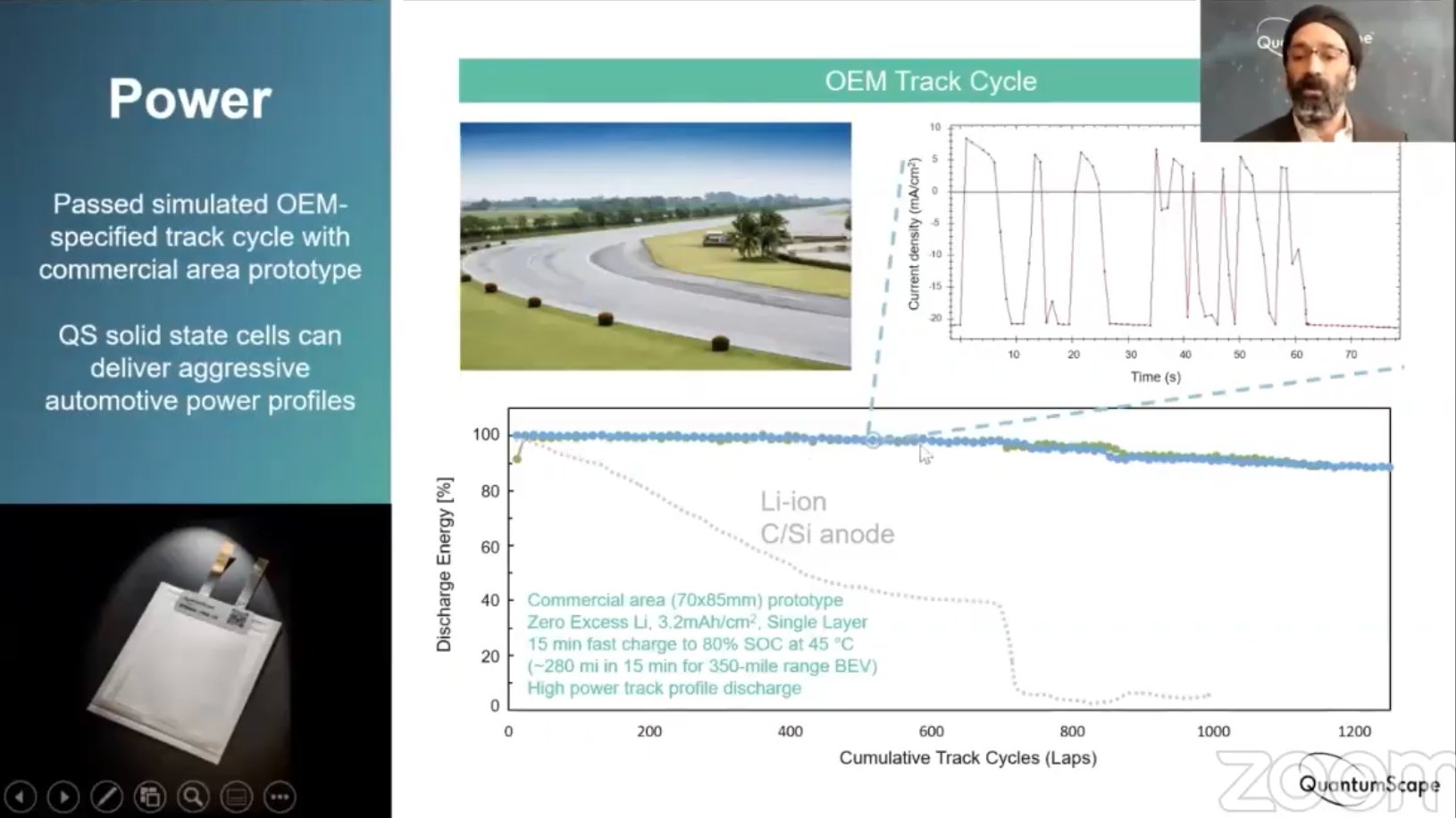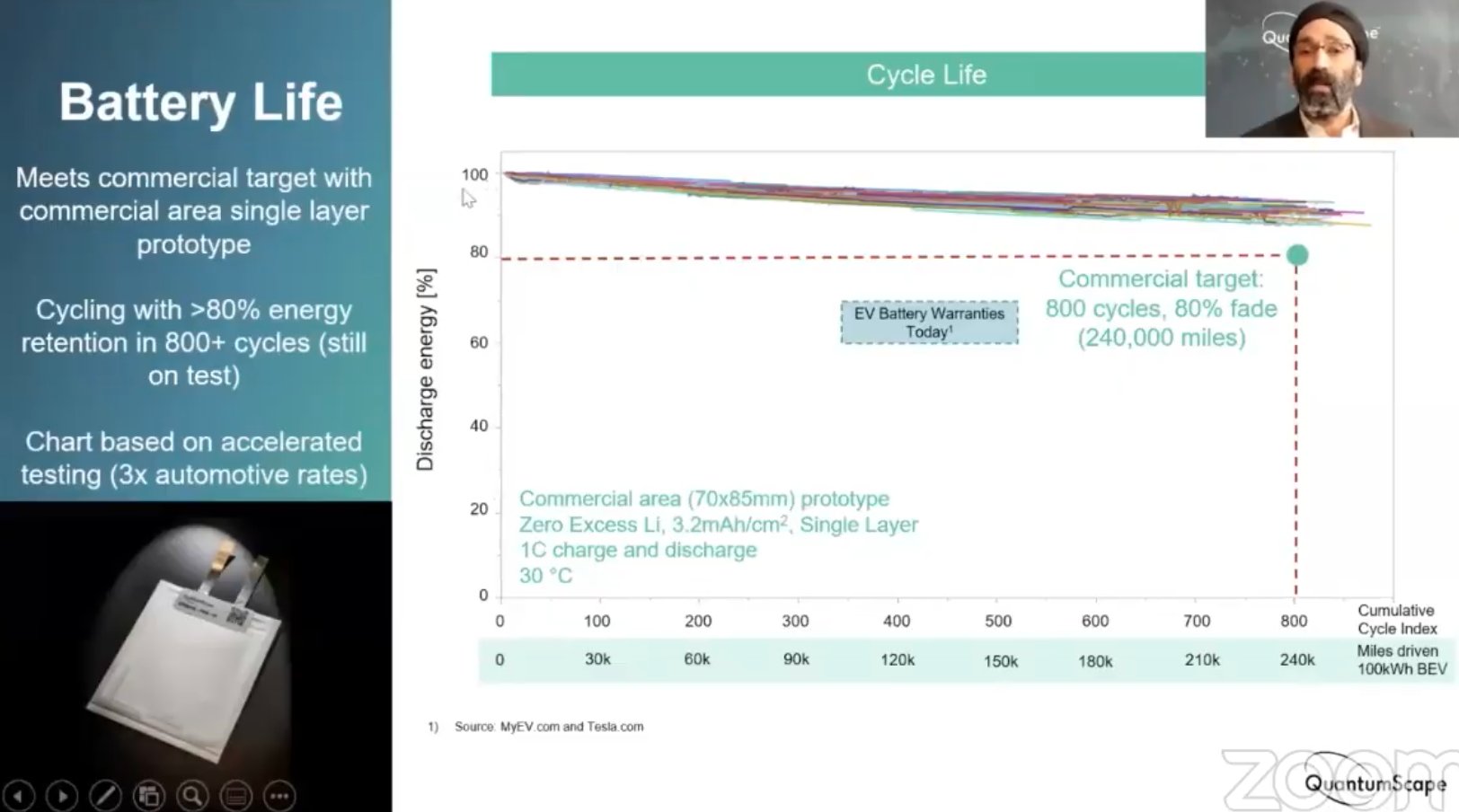Live-tweeting the QuantumScape reveal
Settling down for the much-anticipated QuantumScape reveal. A little taste of this already on their website. Feels like a thread coming on…
Interesting to hear from the start a clear disclaimer about this showcase presenting “forward looking statements”, making clear that reality might differ from expectation outside of QS’s control.
Recap of investment: they’re well-funded by now, having raised ~$1.5bn so far, about ~$300m has gone into R&D so far. VW are committed to the tune of $300m, and have a joint venture with QS for manufacturing. Now they’re listed, market cap was ~$15bn last I checked…
More recap of basic concept: solid state electrolyte with Li metal anode, but the cell is fabricated “zero excess” or “anode free”, i.e., there is no Li metal in the cell from the start, it is plated out of the cathode on 1st charge, for maximum energy density
Conventional knowledge is that this means big capacity losses because Li metal generally means bad efficiency. QS is arguing that not only have they solved that, but going without an anode host means eliminating a transport bottleneck, enabling fast charge as well…
Interesting to note already that QS seem to indicate already that the “garnet” class of solid electrolytes is classed as an “unsuccessful attempt”. Most of us guessed that they were using the garnet “LLZO”… maybe not? Wonder if we’ll get some clues…

An important point - so far it seems they are only presenting results on single layer pouch cells. Going from single layer to multi-layer (e.g. tens of layers in practice) adds complications (pressure, inhomogeneity etc) which could be just one challenge for them from here.

Big new result: they are claiming they can reach >100 mA/cm2 Li plating without failure - this would correspond to around 2 minutes full charge. Crazy impressive if true, but I’m sure many will be super skeptical without seeing more data (me included tbh)…
Some impressive looking drive cycle data as well and comparison to a C/Si anode, although it is hard to know at first glance how this translates to “real” cycle numbers that we’re used to. Going to need to look at all this much more carefully later on

This is more conventional and looks very impressive. Showing many repeats as well, showing decent consistency (important!). Zero excess, sensible capacity, very typical test for Li-ion batteries. But still relatively small cells, so interpret with caution

This is interesting too. DSC curves of lithium + electrolyte - no exothermic reaction as the lithium melts, an indication of stability of the electrolyte/separator towards lithium metal
